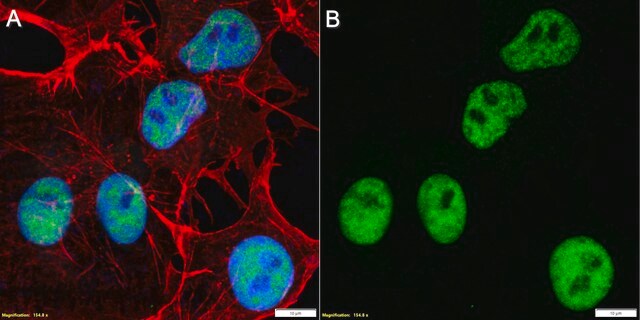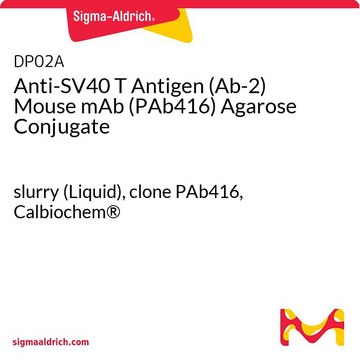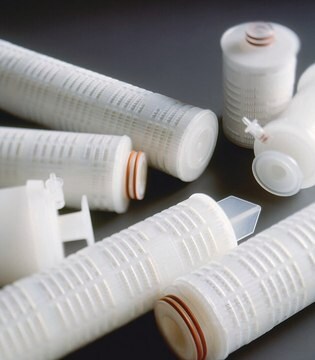DP02
Anti-SV40 T Antigen (Ab-2) Mouse mAb (PAb416)
liquid, clone PAb416, Calbiochem®
About This Item
Polecane produkty
pochodzenie biologiczne
mouse
Poziom jakości
forma przeciwciała
purified antibody
rodzaj przeciwciała
primary antibodies
klon
PAb416, monoclonal
Postać
liquid
zawiera
≤0.1% sodium azide as preservative
reaktywność gatunkowa
SV40-infected cells
producent / nazwa handlowa
Calbiochem®
warunki przechowywania
do not freeze
izotyp
IgG2a
Warunki transportu
wet ice
temp. przechowywania
2-8°C
docelowa modyfikacja potranslacyjna
unmodified
Opis ogólny
Immunogen
Zastosowanie
Immunoblotting (1-5 µg/ml, see application references)
Immunofluorescence (1-5 µg/ml)
Immunoprecipitation (1-5 µg antibody, use Cat. No. DP02A)
Paraffin Sections (see application references)
Opakowanie
Ostrzeżenie
Postać fizyczna
Komentarz do analizy
3T3 cells
SV80 or SV-T2 cells
Inne uwagi
Whyte, P., et al. 1988. Nature334, 124.
Mitchell, P.J., et al. 1987. Cell50, 847.
Dixon, R.A.F. and Nathans, D., 1985. J. Virol.53, 1001.
Simanis, V. and Lane, D.P. 1985. Virol.144, 88.
Mann, R.S. and Carroll, R.B. 1984. Virology138, 379.
Sarnow, P., et al. 1982. Cell28, 387.
Crawford, L.V., et al. 1981. Proc. Natl. Acad. Sci. USA78, 41.
Lane, D.P. and Crawford, L.V. 1979. Nature278, 261.
Carroll, R.B., et al. 1974. Proc. Natl. Acad. Sci. USA71, 3754.
Tooze, J. 1973. Cold Spring Harbor, New York.
Tegtmeyer, P. 1972. J. Virol.10, 591.
Informacje prawne
Nie możesz znaleźć właściwego produktu?
Wypróbuj nasz Narzędzie selektora produktów.
Kod klasy składowania
12 - Non Combustible Liquids
Klasa zagrożenia wodnego (WGK)
WGK 2
Temperatura zapłonu (°F)
Not applicable
Temperatura zapłonu (°C)
Not applicable
Certyfikaty analizy (CoA)
Poszukaj Certyfikaty analizy (CoA), wpisując numer partii/serii produktów. Numery serii i partii można znaleźć na etykiecie produktu po słowach „seria” lub „partia”.
Masz już ten produkt?
Dokumenty związane z niedawno zakupionymi produktami zostały zamieszczone w Bibliotece dokumentów.
Nasz zespół naukowców ma doświadczenie we wszystkich obszarach badań, w tym w naukach przyrodniczych, materiałoznawstwie, syntezie chemicznej, chromatografii, analityce i wielu innych dziedzinach.
Skontaktuj się z zespołem ds. pomocy technicznej








